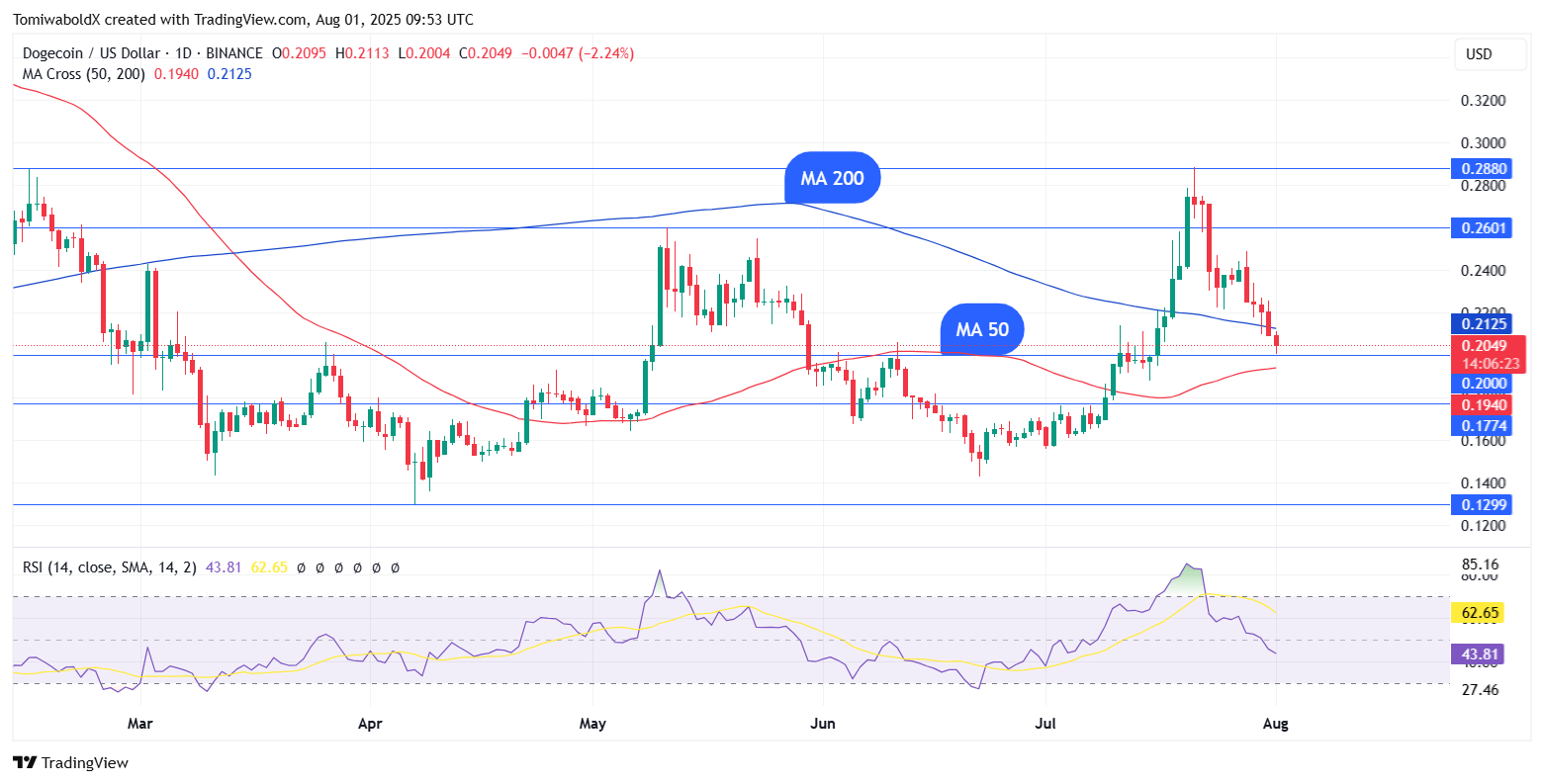Dogecoin (DOGE) dropped nearly 10% due to a stronger US dollar and volatile crypto markets, with over $751 million liquidated in leveraged positions, signaling increased trader caution.
-
Dogecoin declined 9.17% in 24 hours, falling below its 200-day SMA at $0.212.
-
Over $706 million in long positions were liquidated amid rapid market sell-offs.
-
The US dollar index (DXY) rose over 3% in four weeks, pressuring risky assets like cryptocurrencies.
Dogecoin falls nearly 10% amid dollar strength and market volatility. Track crypto liquidations and price support levels with COINOTAG’s latest update.
How Did Dogecoin React to the Strengthening Dollar and Market Volatility?
Dogecoin experienced a sharp decline as the US dollar index (DXY) surged by more than 3% over four weeks, leading to increased financial tightening. This environment caused traders to reduce exposure to riskier assets, triggering a sell-off that pushed DOGE below its 200-day simple moving average (SMA) at $0.212. The cryptocurrency dropped 9.17% within 24 hours, reflecting heightened market uncertainty.
What Were the Key Drivers Behind the Recent Crypto Liquidations?
More than $751 million in leveraged positions were liquidated, with long positions accounting for $706 million of the total. This data, sourced from CoinGlass, highlights how bullish traders were caught off guard by the rapid downturn. The Federal Reserve’s decision to maintain interest rates at 4.25% further dampened expectations for rate cuts, intensifying market pressure on cryptocurrencies like Dogecoin.

DOGE/USD Daily Chart, Courtesy: TradingView
What Are Dogecoin’s Critical Support and Resistance Levels?
Traders are closely monitoring whether Dogecoin can hold above the psychological $0.20 support level. A breach below this could lead to a retest of the 50-day SMA at $0.194. Conversely, if bullish momentum returns, DOGE may attempt to reclaim the 200-day SMA at $0.212, which currently acts as a key resistance point. These levels are crucial for assessing Dogecoin’s short-term price trajectory.
How Does Inflation Data Impact Cryptocurrency Markets?
The Federal Reserve’s preferred inflation gauge, the core Personal Consumption Expenditures (PCE) price index, rose 2.8% year-over-year in June, matching May’s peak and marking the highest rate since February. This persistent inflation level contributes to the Fed’s cautious stance on interest rates, indirectly influencing crypto market dynamics by affecting investor risk appetite.
Frequently Asked Questions
What caused the recent liquidation of over $751 million in crypto positions?
Rapid market sell-offs triggered by a stronger US dollar and unchanged interest rates led to the liquidation of over $751 million in leveraged crypto positions, mostly from long traders.
How does the Fed’s inflation data affect Dogecoin’s price?
Higher inflation rates keep interest rates steady, reducing market optimism and increasing volatility, which negatively impacts Dogecoin and other cryptocurrencies.
Key Takeaways
- Dogecoin dropped nearly 10% amid a stronger US dollar and volatile crypto markets.
- Over $751 million in leveraged positions were liquidated, mostly from long traders caught off guard.
- Critical support at $0.20 and 50-day SMA at $0.194 will determine Dogecoin’s near-term price direction.
Conclusion
Dogecoin’s recent decline highlights the impact of macroeconomic factors like dollar strength and inflation on cryptocurrency markets. With key support levels under pressure, traders should watch for shifts in momentum. COINOTAG will continue providing timely updates to help investors navigate these volatile conditions.
